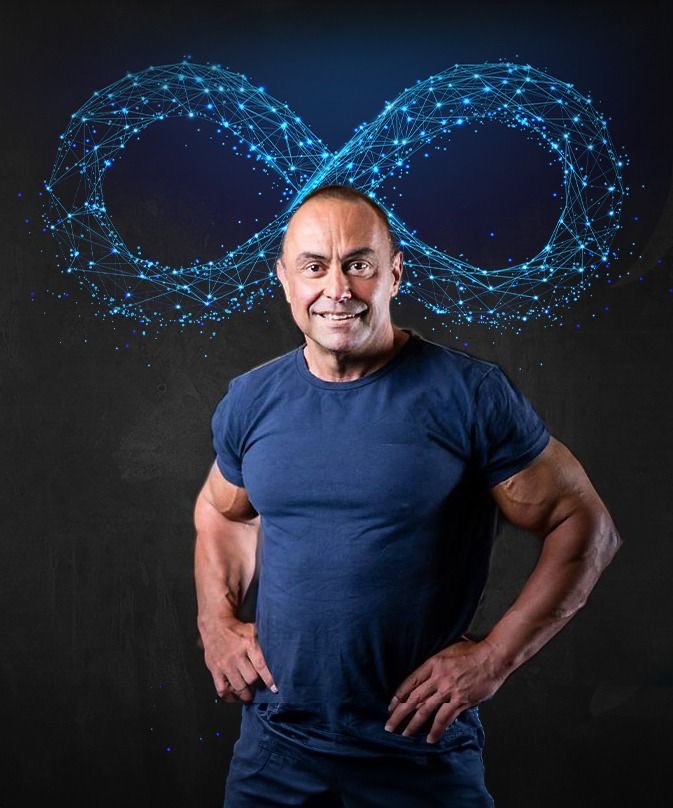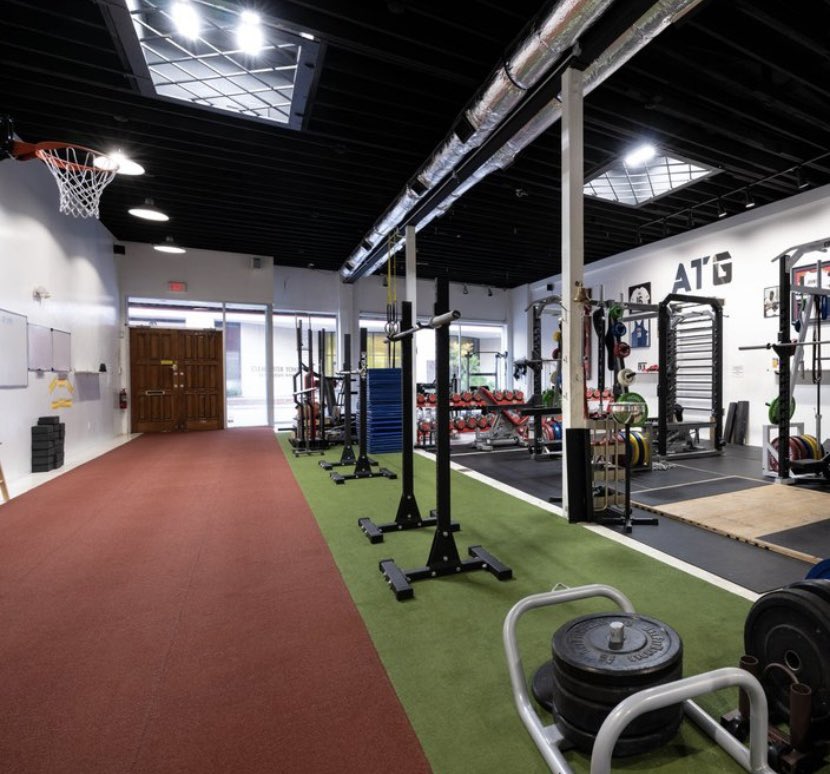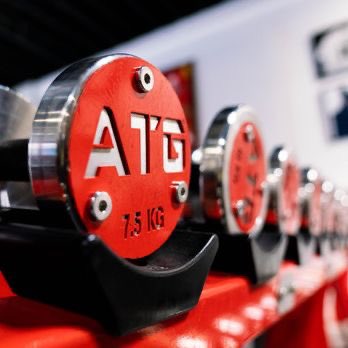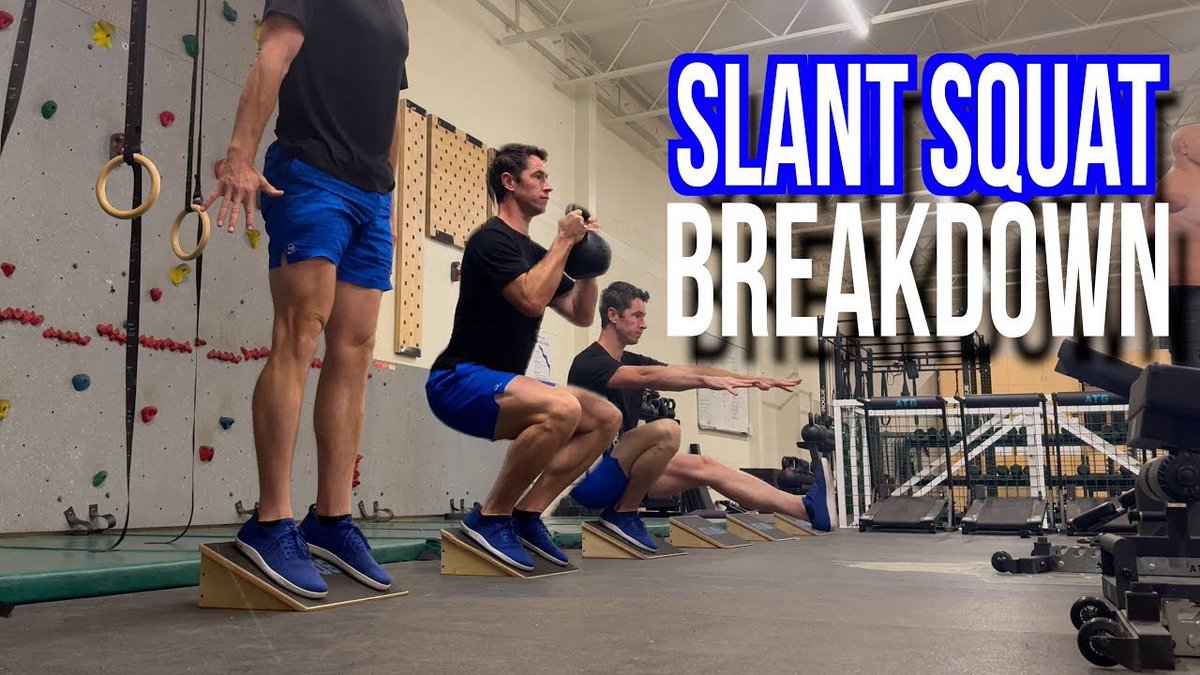Here are 10 unusual exercises which help correct modern deficiencies, and why.
Thanks to @paulsaladinomd for having me out to Costa Rica to teach them.
This is my ATG Zero program, if you’d like help through it at a great price:
(A thread…) https://t.co/svxffM0uMcATGonlinecoaching.com

Thanks to @paulsaladinomd for having me out to Costa Rica to teach them.
This is my ATG Zero program, if you’d like help through it at a great price:
(A thread…) https://t.co/svxffM0uMcATGonlinecoaching.com

1. 5 Minutes Backward
I believe this is Mother Nature’s foundation for foot and knee health.
Stepping backward puts you in position to develop strength while improving circulation for healing.
Resistance with a sled or resisted treadmill means more gain without more risk!
I believe this is Mother Nature’s foundation for foot and knee health.
Stepping backward puts you in position to develop strength while improving circulation for healing.
Resistance with a sled or resisted treadmill means more gain without more risk!
2. 25 Tibialis Raises
(I advise wearing shoes for the comfort of your heels, but good luck getting Paul to put shoes on.)
This your first line of defense when walking, going downhill, and jumping.
You just can’t be “too strong” from the ground up!
(I advise wearing shoes for the comfort of your heels, but good luck getting Paul to put shoes on.)
This your first line of defense when walking, going downhill, and jumping.
You just can’t be “too strong” from the ground up!
Note:
If you were to walk forward right now, looking down at your feet, you’d see that Steps 1 and 2 are the literal opposites of walking.
Everything upward gets easier to handle when you address the body as it is designed.
For longevity, those are my go-to starting steps.
If you were to walk forward right now, looking down at your feet, you’d see that Steps 1 and 2 are the literal opposites of walking.
Everything upward gets easier to handle when you address the body as it is designed.
For longevity, those are my go-to starting steps.
3. 25 Wall Calf Raises
This is a finishing touch to the opening sequence, for good measure.
Ability from the ground up is an investment that pays off for life, whether you want to dunk a basketball or run with your grandkids.
(Two legs = easier. One leg = tougher.)
This is a finishing touch to the opening sequence, for good measure.
Ability from the ground up is an investment that pays off for life, whether you want to dunk a basketball or run with your grandkids.
(Two legs = easier. One leg = tougher.)
4. 30 Second ATG Split Squat
A stairwell is the perfect equipment.
Higher step = easier mobility.
Holding the rail = easier balance and strength.
This is the near opposite of excess sitting, and it’s my best advice to stay limber for life:
A stairwell is the perfect equipment.
Higher step = easier mobility.
Holding the rail = easier balance and strength.
This is the near opposite of excess sitting, and it’s my best advice to stay limber for life:
5. 15 Seated Goodmornings
In cultures that stop deep squatting, the inner thighs stiffen up.
Start with bodyweight, and only gradually work on loading.
This is a gift that keeps on giving for mobility and lower back strength:
In cultures that stop deep squatting, the inner thighs stiffen up.
Start with bodyweight, and only gradually work on loading.
This is a gift that keeps on giving for mobility and lower back strength:
6. 15 Piriformis Push-ups
Kids naturally sit in various lateral hip positions.
Schools put them in chairs too soon.
Tight outer hips = more knee and lower back pain.
This progression gradually rebuilds that natural mobility:
Kids naturally sit in various lateral hip positions.
Schools put them in chairs too soon.
Tight outer hips = more knee and lower back pain.
This progression gradually rebuilds that natural mobility:
7. 15 Single-Leg Pike Progressions
Modern shoes with raised heels stiffen us up behind the knee.
Farther hands = easier.
Closer hands = tougher.
A solid goal is palms to floor, no pain.
ABILITY is your best friend when it comes to preventing pain.
Modern shoes with raised heels stiffen us up behind the knee.
Farther hands = easier.
Closer hands = tougher.
A solid goal is palms to floor, no pain.
ABILITY is your best friend when it comes to preventing pain.
8. 30 Second Couch Stretch
Fragile folks should start with an actual couch (notice the THICK padding).
This PLUS the ATG Split Squat can deliver huge gains for those who sit too much.
This is a simple but important ingredient in every program I make:
Fragile folks should start with an actual couch (notice the THICK padding).
This PLUS the ATG Split Squat can deliver huge gains for those who sit too much.
This is a simple but important ingredient in every program I make:
Note: a couch or bench are easier due to the angle. Using a wall is more advanced.
In either case, I am actively contracting my glute muscles while “pressing” with my quads.
Your goal is to gradually and comfortably OWN positions of mobility - NOT wince through them:
In either case, I am actively contracting my glute muscles while “pressing” with my quads.
Your goal is to gradually and comfortably OWN positions of mobility - NOT wince through them:

9. 15 Pullovers
A wall is easier to start.
Then working “cross-bench” is my favorite upper body exercise, as it allows measurable loading, wonderful stretch, and additional strength for the neck flexors:
A wall is easier to start.
Then working “cross-bench” is my favorite upper body exercise, as it allows measurable loading, wonderful stretch, and additional strength for the neck flexors:
10. 15 External Rotations
I believe women should have no problem with 12 pounds, and men no problem with 20 pounds, but when starting out, most men can barely do 12 pounds for 15 reps.
This trains opposite muscles to throwing and pressing. These rarely get the same INTENT:
I believe women should have no problem with 12 pounds, and men no problem with 20 pounds, but when starting out, most men can barely do 12 pounds for 15 reps.
This trains opposite muscles to throwing and pressing. These rarely get the same INTENT:
This is not only a workout, but also a mobility/resilience assessment in itself.
You may go through a second set on any point you feel you particularly need.
The results for myself and others have been superhuman compared to the norm!
I hope you find your true potential. 🫡
You may go through a second set on any point you feel you particularly need.
The results for myself and others have been superhuman compared to the norm!
I hope you find your true potential. 🫡
Extra note:
We are all up against a math equation of our ABILITIES vs the forces of life.
I was told my left knee would never fully bend or play sports.
Now I can do this (below).
But high enough… I’d break my legs.
Train to put the math in your favor, but use common sense.
We are all up against a math equation of our ABILITIES vs the forces of life.
I was told my left knee would never fully bend or play sports.
Now I can do this (below).
But high enough… I’d break my legs.
Train to put the math in your favor, but use common sense.
PS. Organic meat and fruit as primary foods works for me.
If you disagree, that’s totally cool.
Everyone promoting real food and exercise is on the same team in the grand scheme.
If you’re not trying to make billions of dollars on junk food and overmedication, I’m with you.
If you disagree, that’s totally cool.
Everyone promoting real food and exercise is on the same team in the grand scheme.
If you’re not trying to make billions of dollars on junk food and overmedication, I’m with you.
• • •
Missing some Tweet in this thread? You can try to
force a refresh













